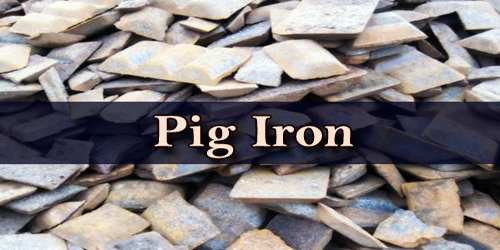A recent article published in the Proceedings of the National Academy of Sciences adds to our knowledge of corn production, one of the most important cash crops in the United States. The study focuses on “hybrid vigor,” also known as “heterosis,” a well-known phenomenon in which crossings between inbred lines of maize and other crops generate offspring that exceed their parents in yield, drought tolerance, and other desirable traits.
Despite almost a century of dedicated investigation, the processes behind heterosis remain poorly understood. The new PNAS study looks at the connection between heterosis and soil microorganisms, finding that heterosis is aided by a microbial community in most situations.
“Hybrid vigor is super important in agriculture because one of the reasons for the great increases in crop productivity over the last several decades has been the use of hybrid cultivars, which tend to be much more productive and stronger and healthier than inbred cultivars,” said lead author Maggie Wagner, assistant scientist at the Kansas Biological Survey & Center for Ecological Research and assistant professor with the KU Department of Ecology & Evolutionary biology.
“Despite how critical this is, we don’t completely comprehend why hybrids outperform inbreds. The genetics of hybrid vigor have gotten a lot of attention, which makes logical because hybridization is a genetic process, but there’s some evidence that the environment plays a role in hybrid vigor strength as well. In this paper, we showed microbes living in the soil are one of the environmental factors that have a really important effect on hybrid vigor.”
Wagner and her co-authors discovered that under sterile circumstances, without the presence of microorganisms, inbred parent lines and hybrid crossings function identically, but heterosis “may be reestablished by inoculation with a basic community of seven bacterial strains.”
Seedlings injected with “autoclaved vs live soil slurries in a growth chamber and plants growing in steamed or fumigated versus untreated soil in the field” showed the same results.
Kayla Clouse and Laura Phillips were Wagner’s KU co-authors. Other North Carolina State University co-authors included Clara Tang, Fernanda Salvato, Alexandria Bartlett, Simina Vintila, Manuel Kleiner, Mark Hoffmann, Shannon Sermons, and Peter Balint-Kurti. The US Department of Agriculture also works with Sermons and Balint-Kurti.
“In lab experiments, we essentially grew the plants inside plastic bags in order to provide a completely sterile environment for them,” Wagner said.
“This allowed us to completely regulate which bacteria interacted with the plants, if any at all. So it’s a combination of fundamental microbiology and a novel growing environment. But then in the field, we tried several different approaches to sterilize the soil, including just steam fumigation, which is used often, especially in fruit and vegetable production. Although it isn’t commonly utilized for corn growth, we felt it was necessary for our experiment. We also used chemical fumigants, and all of the techniques yielded comparable outcomes.”
The researchers discovered that steaming “enhanced rather than diminished heterosis,” showing that the direction of the impact depended on community composition, environment, or both, in a soil-steaming experiment at the KU Field Station that temporarily removes or decreases microorganisms.
“It’s complicated, and we don’t fully understand what’s going on yet,” Wagner said.
“The first three experiments all showed the exact same direction of the effect. But then for the fourth experiment, we again found that microbes influenced heterosis but it was in the opposite direction, where the hybrid had a more positive reaction to sterile conditions. We think that this could just be due to some something particular to the microbial community in the soil for this one experiment, but we’re not sure yet”
The new article will be followed by similar research funded by a $900,000 new grant from the National Science Foundation, which will involve many of the same people, including Wagner, who will serve as one of the primary investigators.
Testing a variety of microbes for their ability to boost hybrid vigor in corn, identifying genetic variants and regions of the corn genome that respond to soil microbes, and studying how microbes behave within the roots of inbred and hybrid corn at the molecular level will all be part of the grant work. The researchers expect that their findings will lead to improved agricultural and conservation practices.
“We have this very basic observation of microbes affecting hybrid vigor, but we weren’t able to follow up on it without some funding this grant is going to push the same line of research forward,” Wagner said.
“My collaborators are Manuel Kleiner at N.C. State who is an expert in metaproteomics, which is a way to measure the protein expression of microbes inside plant roots. We’re hoping to learn more about how hybrids and inbreds are interacting with microbes differently, possibly by influencing the microbes’ behavior. Our other collaborator is Peter Balint-Kurti with the USDA. He’s an expert in the maize immune system and the genetic basis of disease resistance, so he’s going to map some genes related to hybrids’ responses to microbes. Kayla Clouse, a graduate student in my lab at Kansas, will investigate some of the larger patterns of this phenomena; for example, we don’t yet know if all maize hybrids will react to microorganisms in the same manner. So far, we’ve only confirmed this in one hybrid, so we need to figure out how generalizable it is and we’re also hoping to figure out what is it about the microbial community that that can affect this response in either direction. A lot of her future dissertation work will be related to this project.”
Work under the NSF grant will continue through 2024.
















